
Muslim tomb near the start of the trail to the cave temples
29 January Badami
Just before dawn I got a three-wheeler for the ride to
the train station in Hosapete. Temples and shops in villages along the way had
already opened and many people were up and about. I arrived in time for a little
breakfast of idly and tea at a small shop. My train, the 06541
Yesvantpur-Vijayawada Express, turned out to be running about an hour late, not
surprising since it had come from Bengaluru. At about 8:30 a.m. it began rolling
across flat farmlands. Rocky hills began appearing near Badami, appropriate
because the town is famous for ancient caves cut into cliffs. I had a reserved
seat (Rs. 426 rupees) yet surprisingly the train ran less than half full—very
unusual for India. Even if all seats had filled, travel would still have been
far more comfortable than going by bus. On arrival at Badami I got a three
wheeler and rode the four kilometers to Hotel Rajsangam, centrally located on
busy and noisy Station Road. This hotel seemed the best value from online
reviews, and reception offered a fan room with private bath for Rs. 1000, the
same as Agoda listed. Lots of hotels and restaurants are nearby and the bus
station is directly across the road. I plan to stay three nights to visit the
nearby cave temples, fort, and museum. More temples lay farther out in
Pattadakal and Aihole that I hope to visit as well. I tucked into a couple idly
and a plain dosa for lunch at the vegetarian restaurant in front of the hotel,
then returned in the evening for a South Indian thali capped off with a kulfi
ice cream. A nearby mosque announced its presence with loud calls to prayer.
30 January Badami
I hung out in my room most of the morning, then had a
late breakfast of idly, upma (savory porridge made with semolina and veggies),
and a big glass of masala tea. A look at Google map’s satellite view provides a
great perspective of Badami’s red-rock landscape as well as the sights, which
lie within walking distance southeast of the center. The heavy traffic on
Station Road made for unpleasant walking, then I turned onto quiet village-like
side streets with Hindu temples and Muslim shrines close neighbors. I passed
through an open-air market on the way to the Archaeological Museum, set at the
base of red sandstone cliffs and fronted by Agasthya Tirtha Lake. Inside I
especially liked the large stone sculptures including a makara tokarna
(decorative gateway) and reliefs of Hindu gods, assisted by good descriptions in
English. Sadly, no photos allowed.
Next I strolled south through narrow lanes to
the four rock-cut cave temples (Rp. 300) set high on the cliffs. Although of
different sizes, each cave follows the pattern of a columned porch, an interior
hall, and a shrine room in the back. Large reliefs of gods or Jain tirthankars
cover the sides and ceilings of the porches. Smaller figures and designs
decorate the pillars and ceilings, and pot-bellied dwarfs form rows at the base
in front. Caves may have all been brightly painted, though only the porch of the
third cave still has pigment. The first cave, dedicated to Shiva, has a lingam
in the sanctuary and dates to about 550. The next two caves date a bit later in
the 6th century and honor Vishnu, though only bases remain in the shrine rooms.
Cave four, the smallest, contains countless reliefs—large and small—of Jain
tirthankars (teachers), with an image of the first Jain tirthankar Adinath in
the inner sanctum.

Muslim tomb near the start of the trail to the cave temples
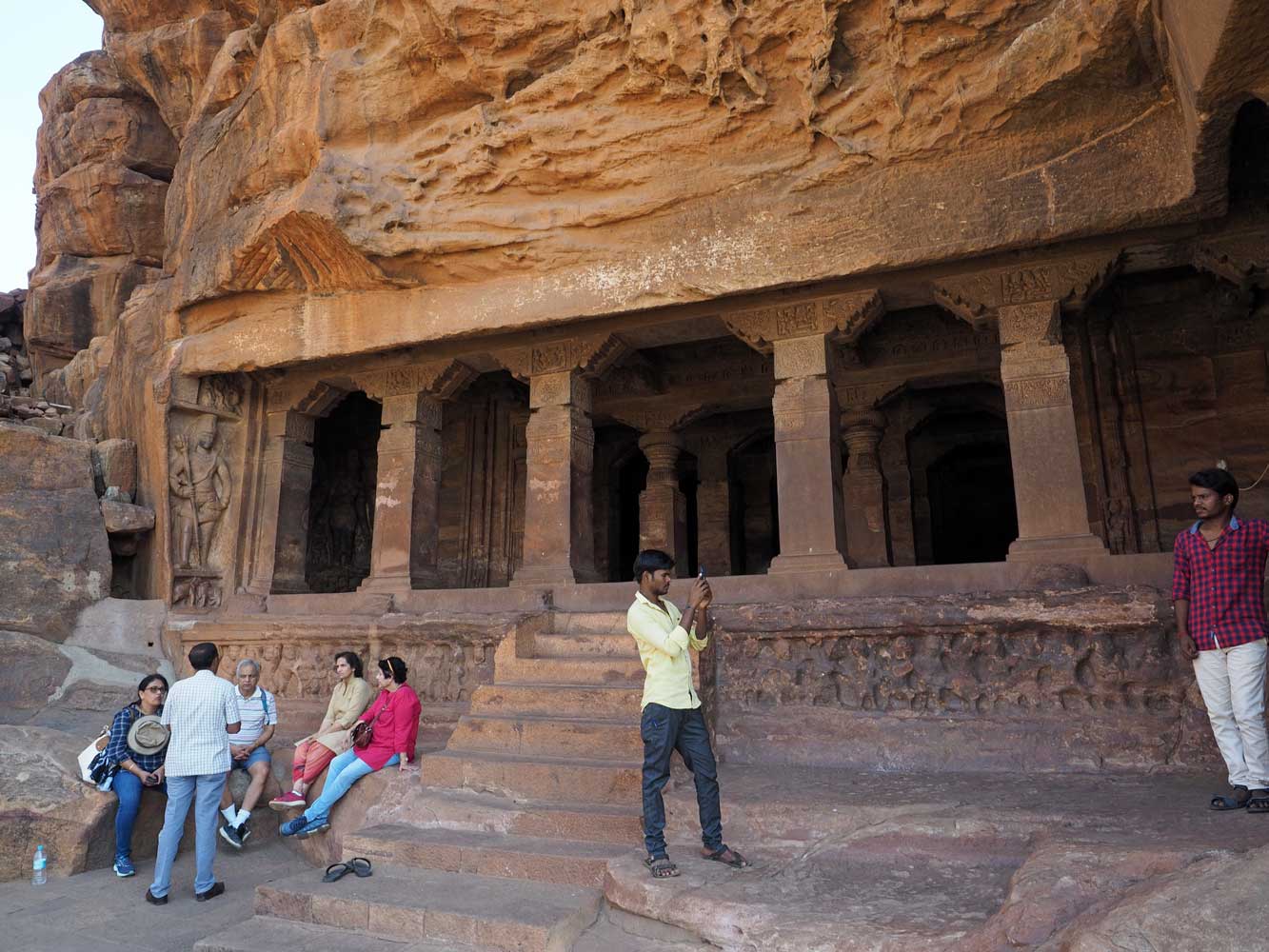
Cave 1 (Shiva)
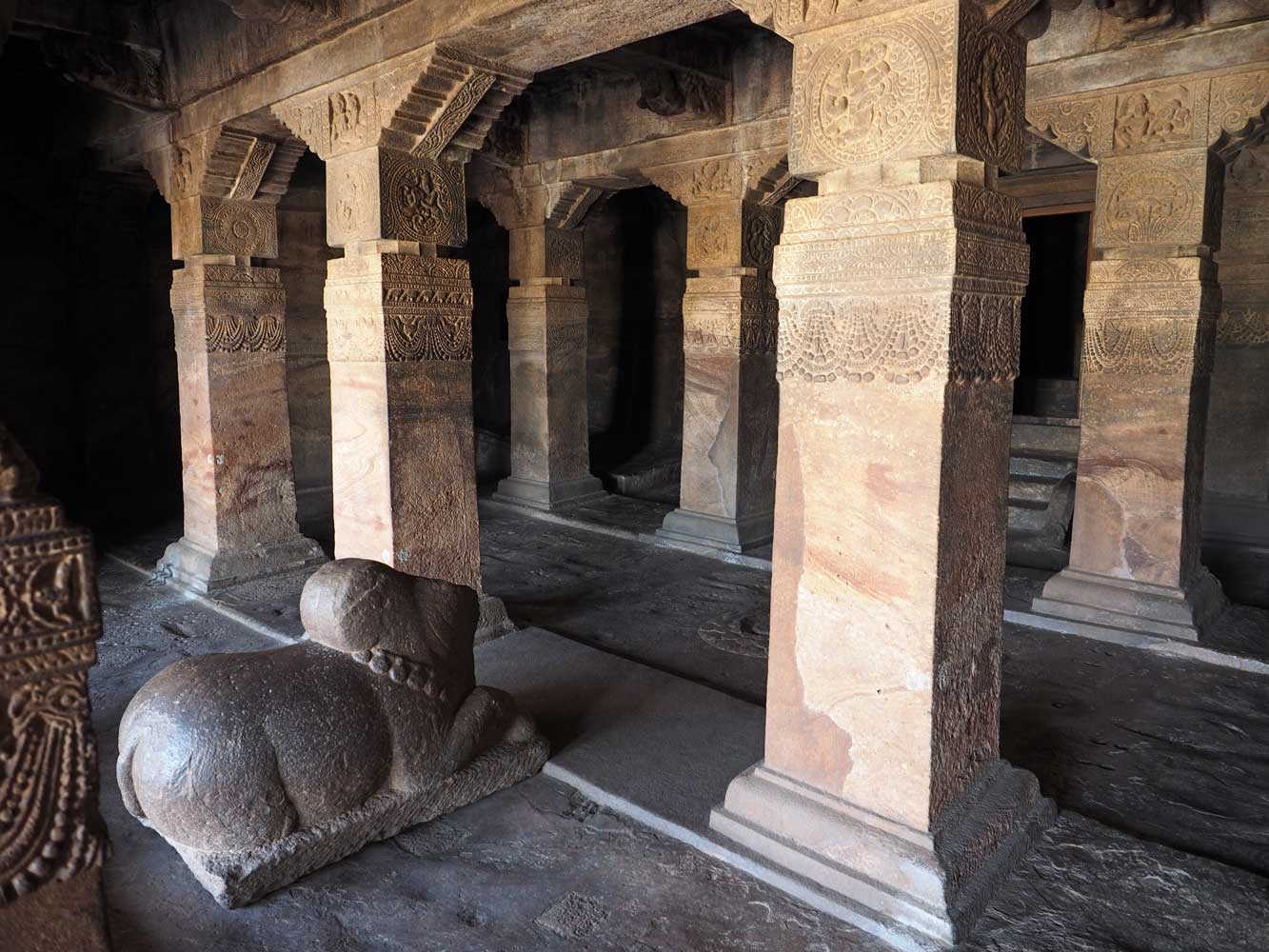
A headless Nandi faces an empty sanctum.

Dancing Shiva with Nandi and sons Ganesha and Kartikeya

Cave 2 (Vishnu)

Vishnu in his Vamana (dwarf) avatar
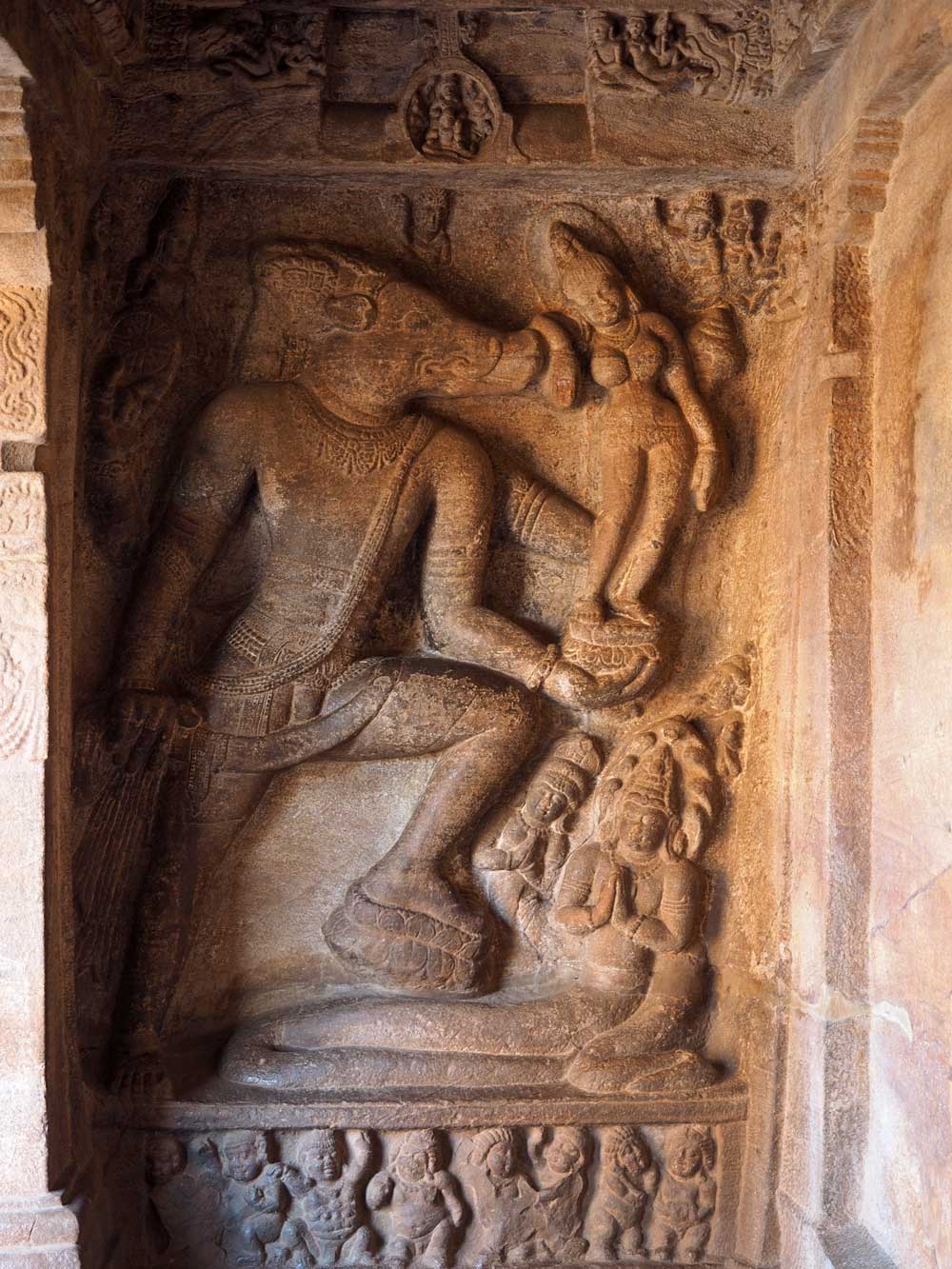
Vishnu in his Varaha (boar) avatar
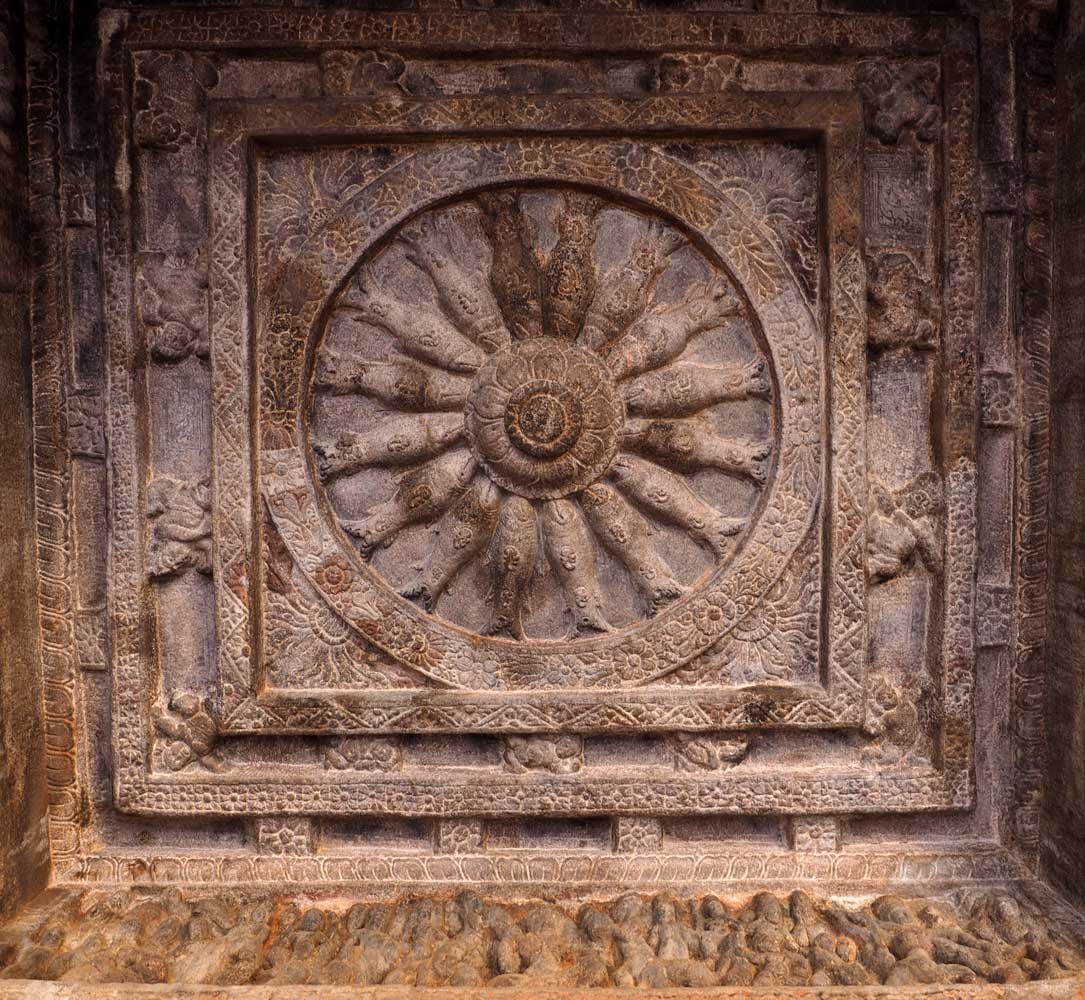
Ceiling panel; the fish may represent Vishnu in his Matsya avatar.

Door to the empty sanctum
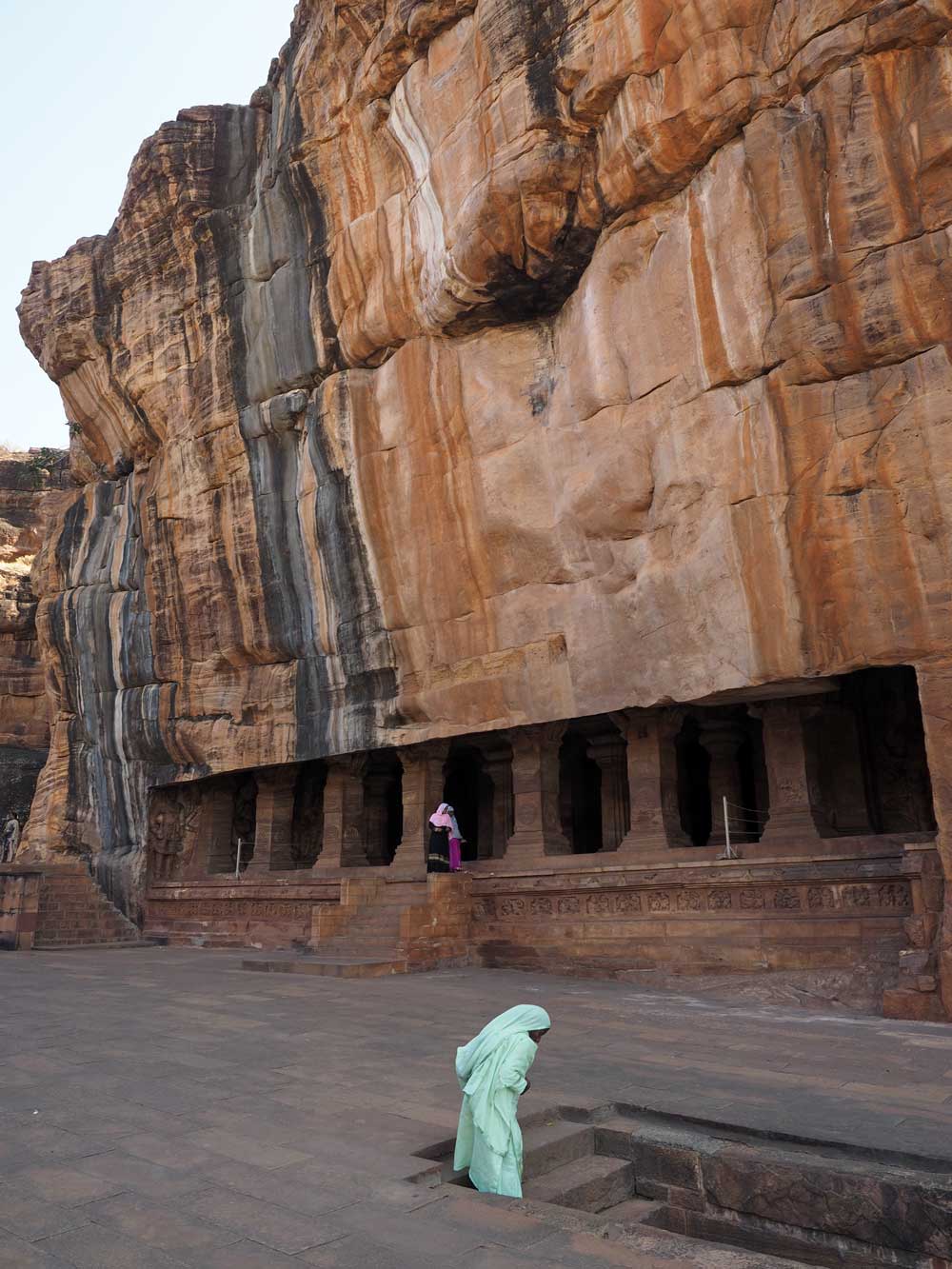
Cave 3 (Vishnu), the biggest
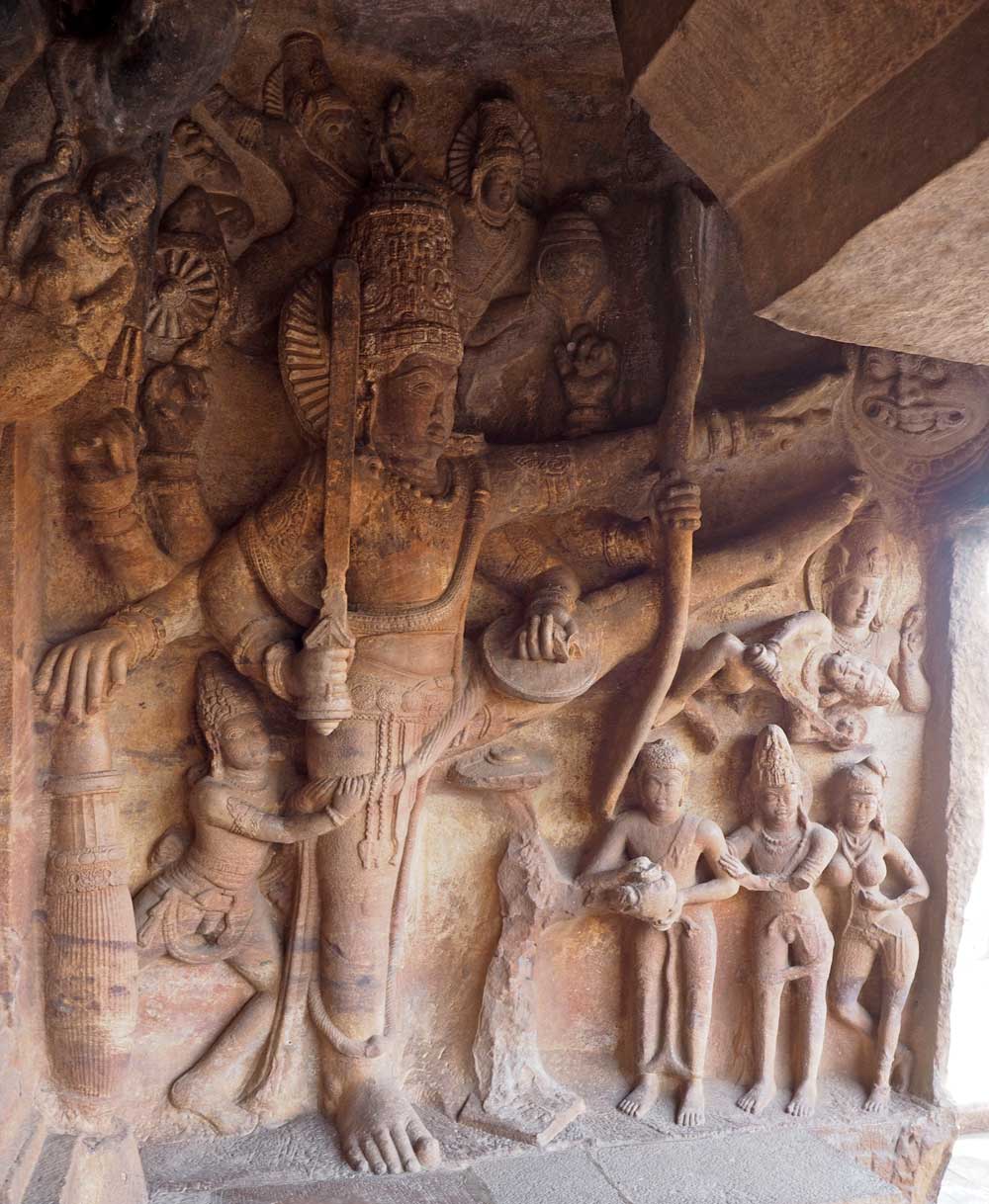
Here too Vishnu appears in his Vamana (dwarf) avatar.
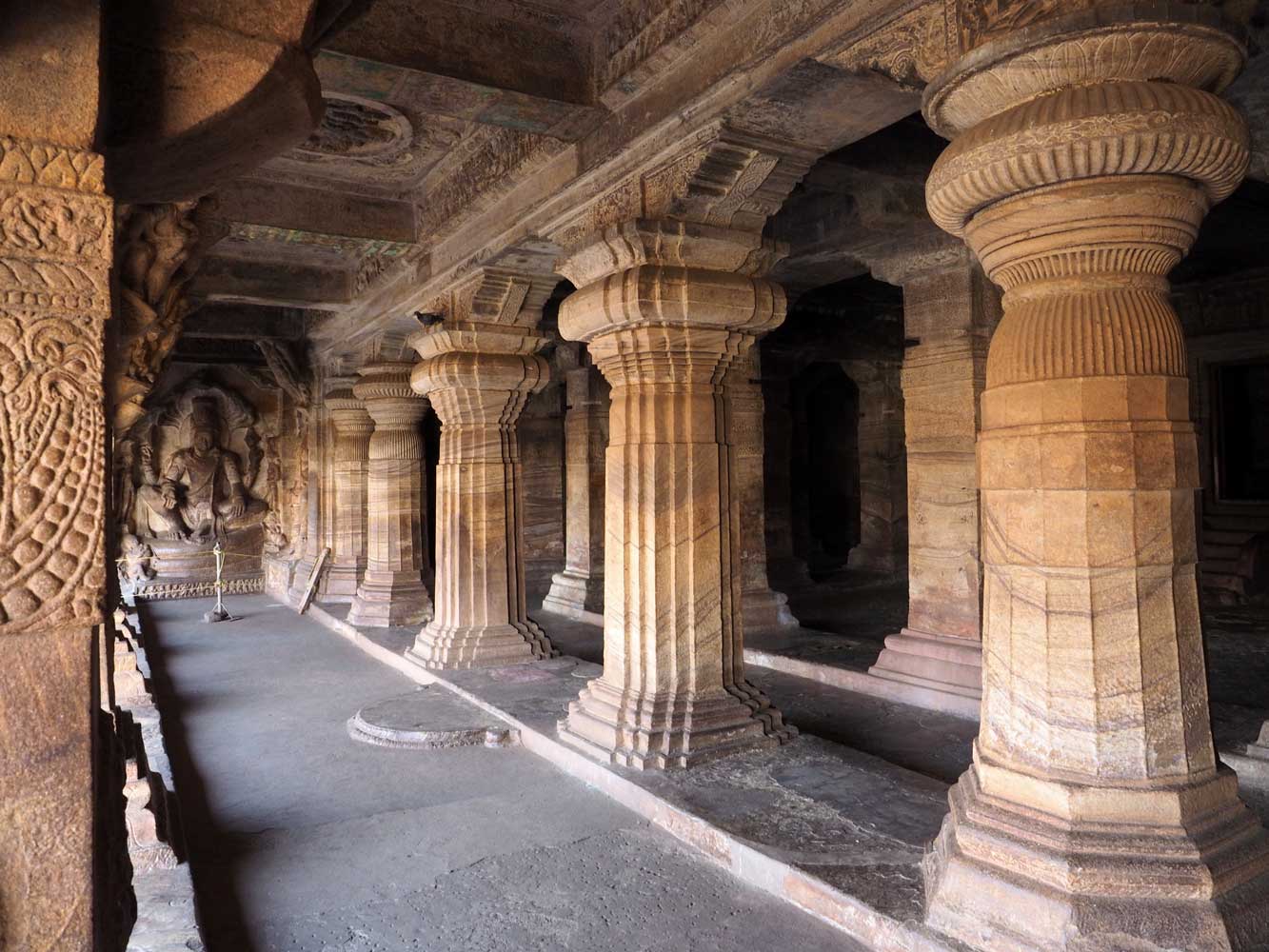
Wonderful stone carvings cover nearly all the surfaces!
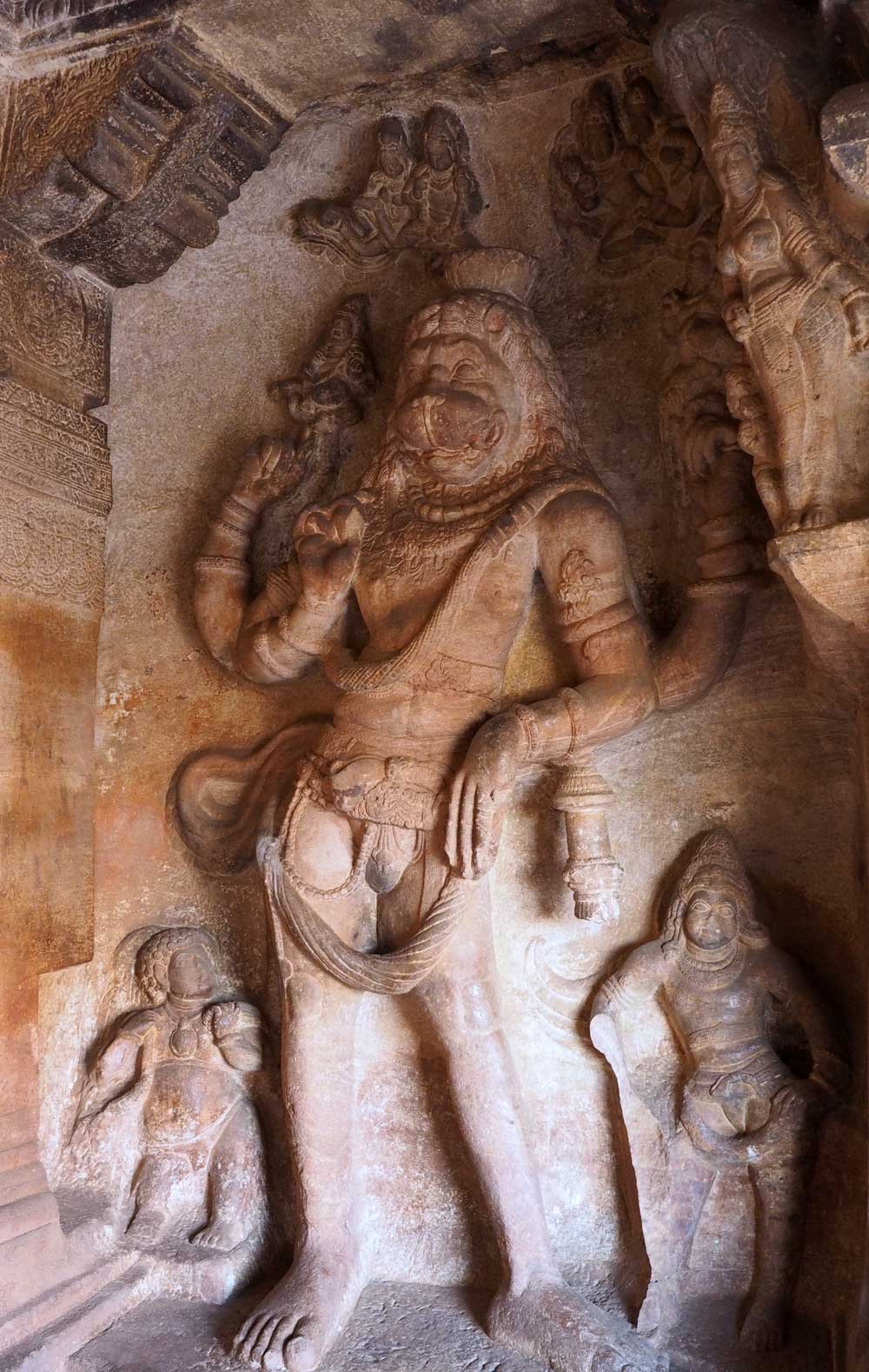
Narasimha, Vishnu as half man and half lion
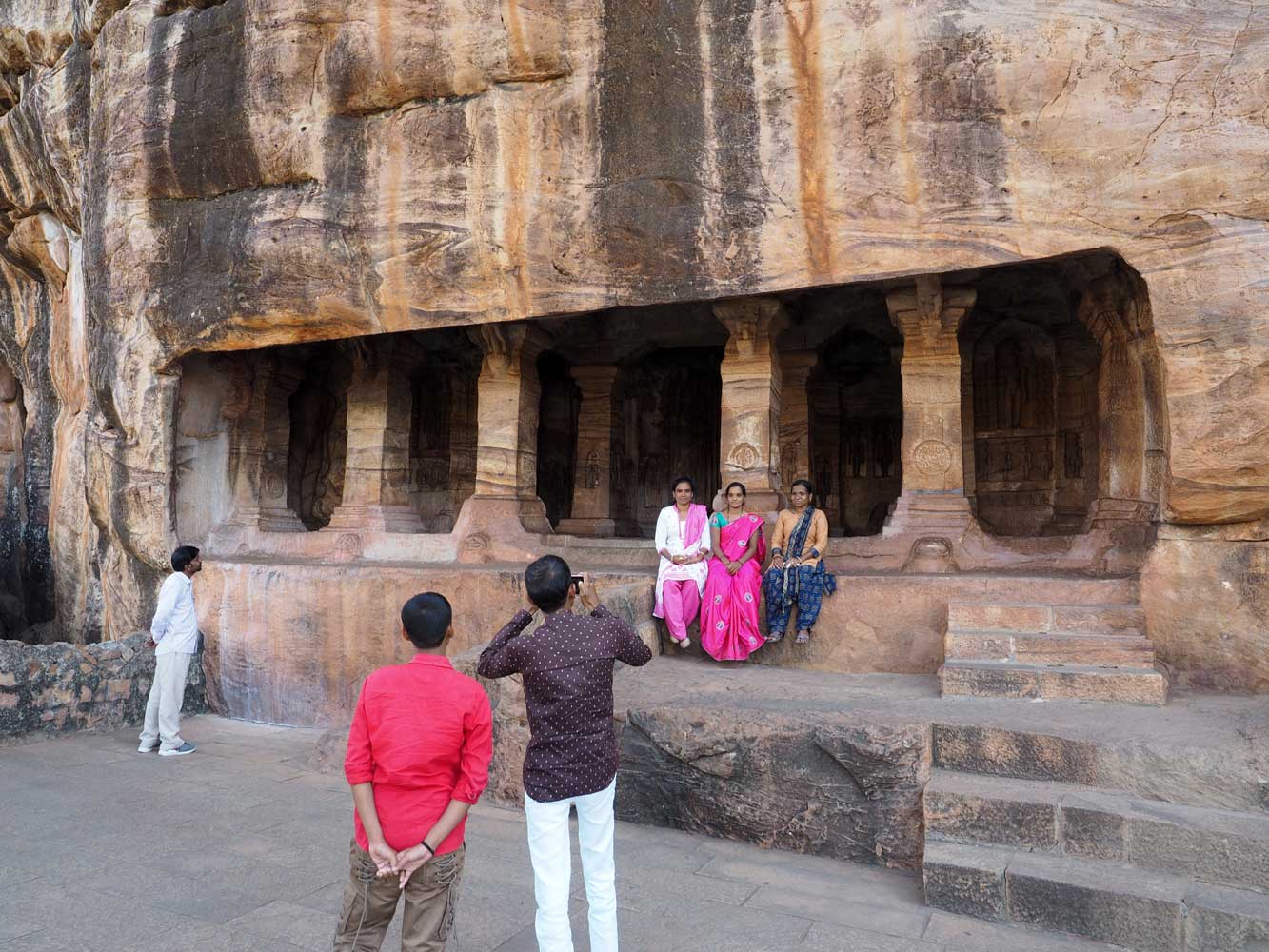
Cave 4 (Jain)
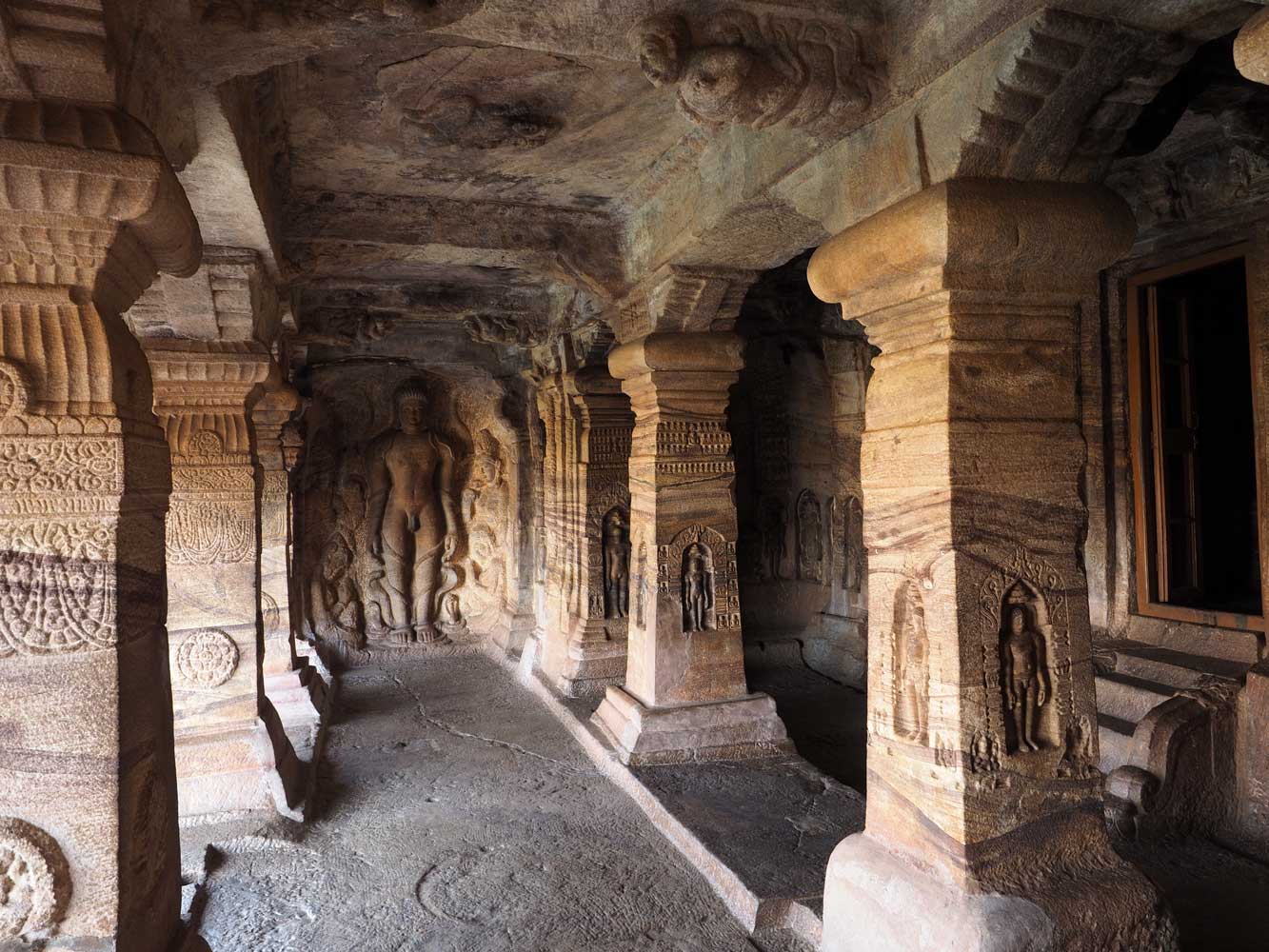
Jain tirthankara images abound inside.
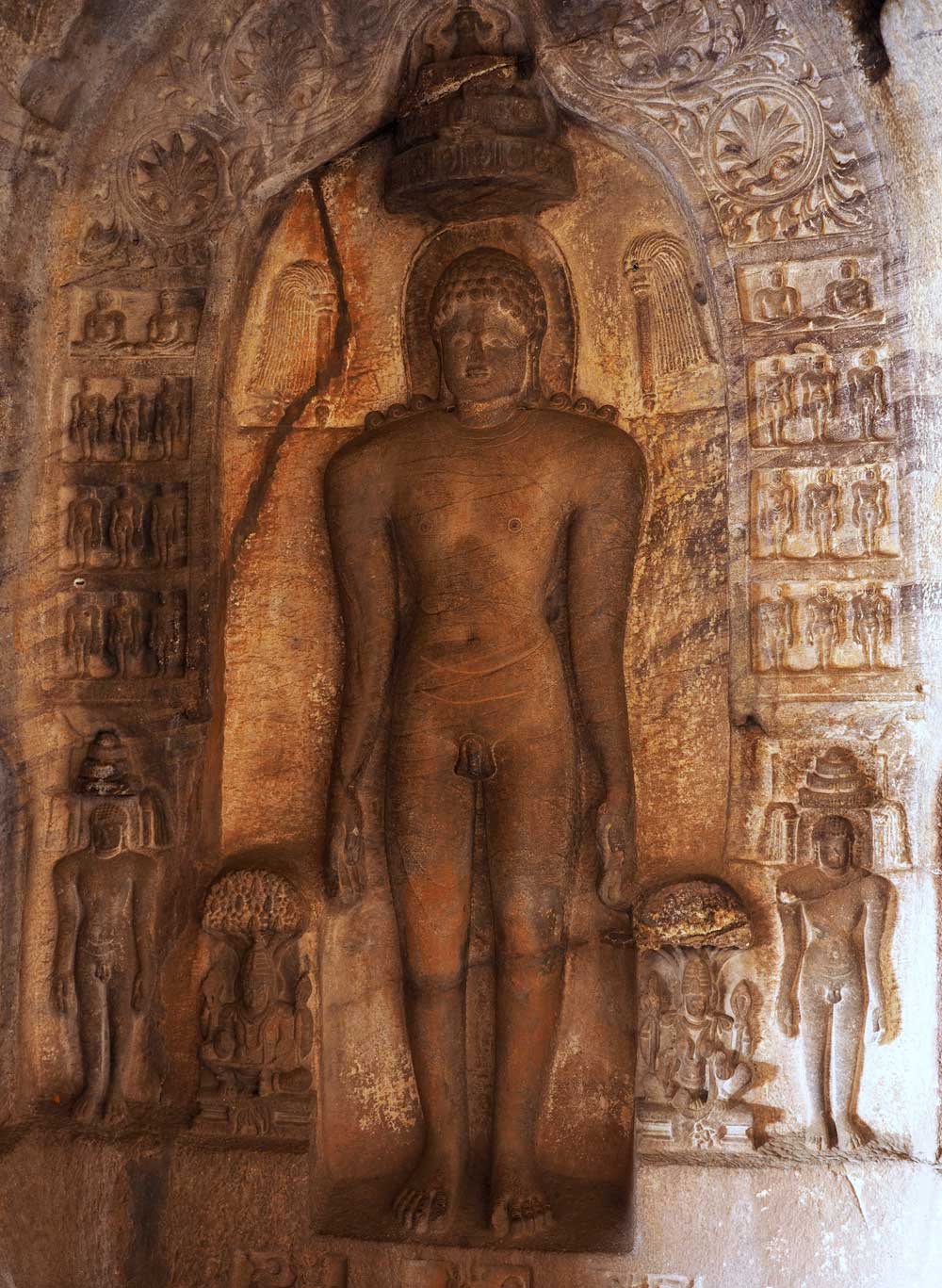
And come in many sizes.
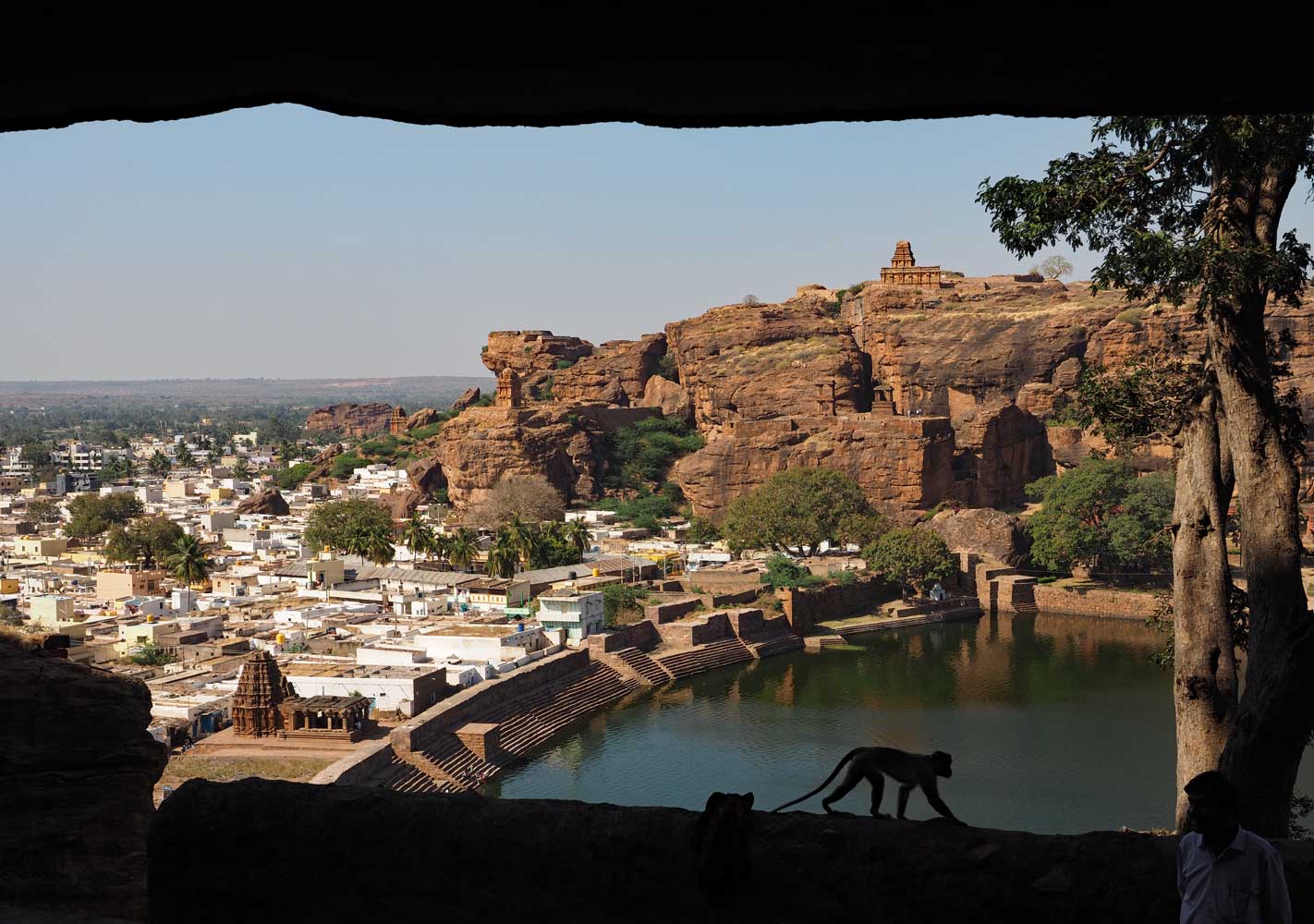
Lower Shivalaya and Upper Shivalaya temples stand atop North Fort on the far
side of Agasthya Tirtha Lake.
Back near the museum I headed up the wide stone steps to North Fort on the plateau above. Gates and fortifications would have made an enemy attack very difficult. Two 6th-century temples, Lower Shivalaya and Upper Shivalaya, have commanding perches overlooking Badami and Agasthya Tirtha Lake. The original images have disappeared, but the lower temple once contained a figure of Ganesh and the upper a figure of Vishnu. Between the temples I passed a round bastion with a panoramic view and three beehive-shaped stone granaries. Impressive fortifications and ruins also stand atop the cliffs across the lake above the cave temples, and I assume this must be the South Fort.
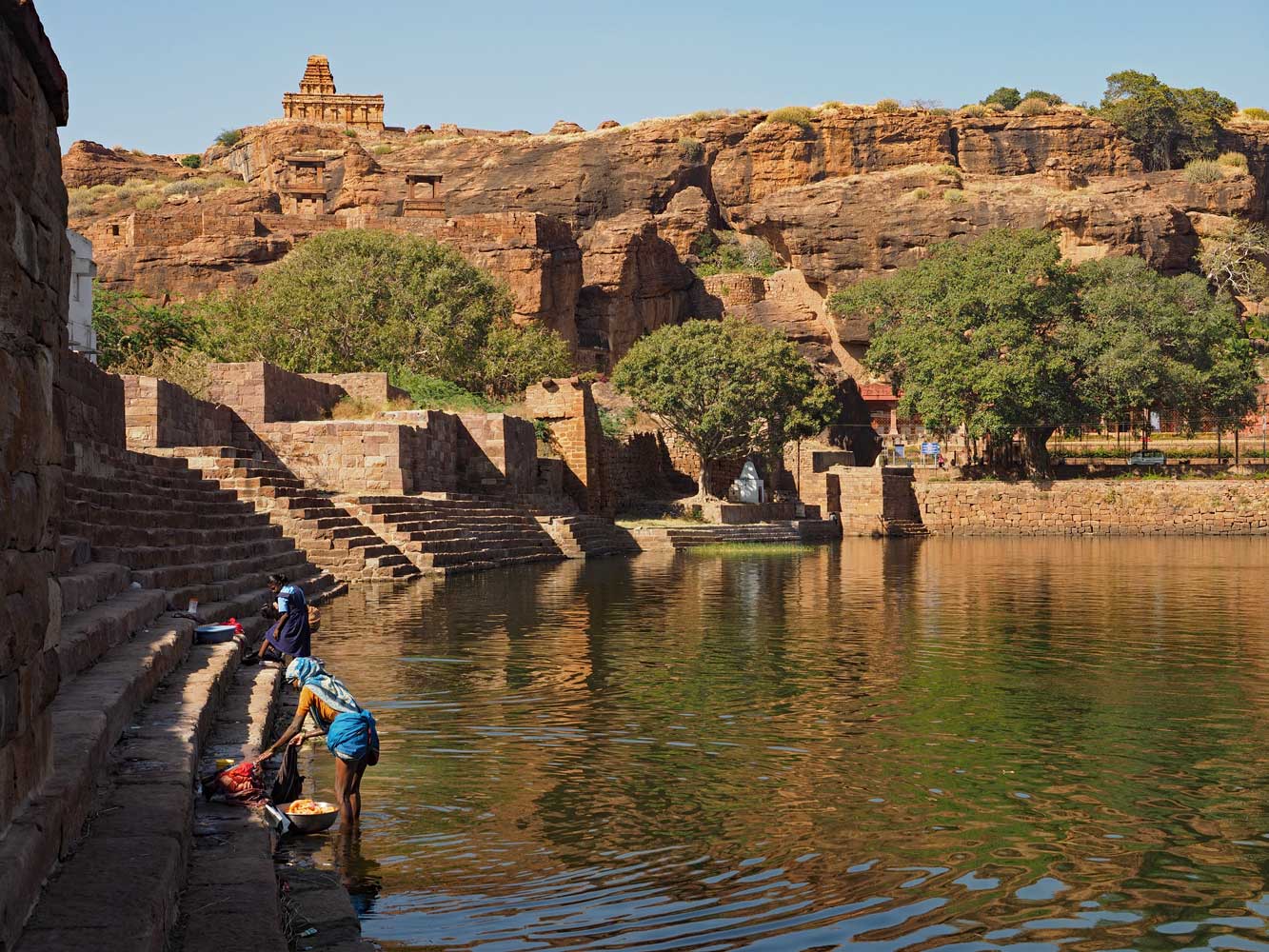
Ghats line the dam of Agasthya Tirtha Lake. Upper Shivalaya Temple stands
atop North Fort.
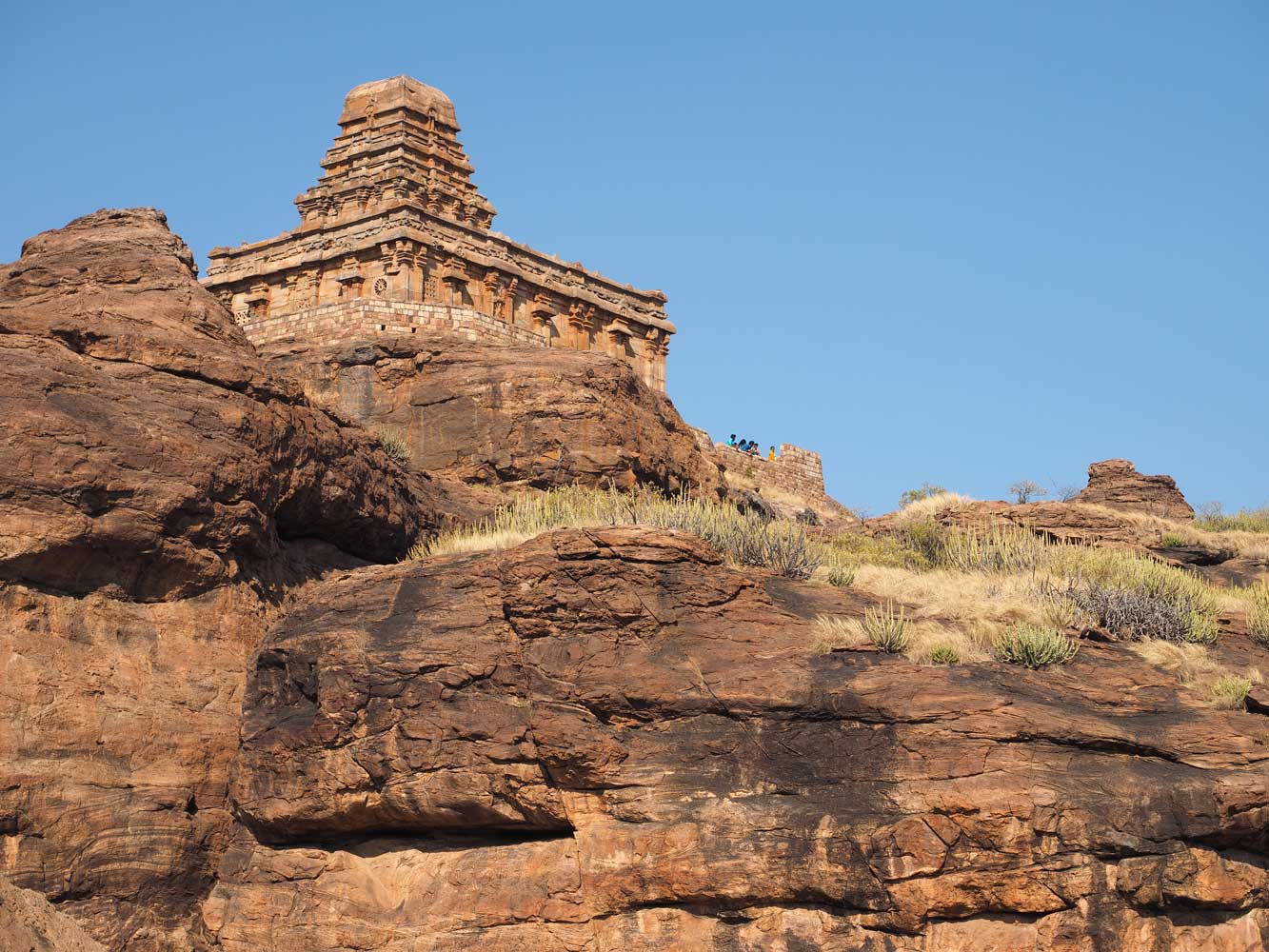
View of Upper Shivalaya Temple as I climb to North Fort
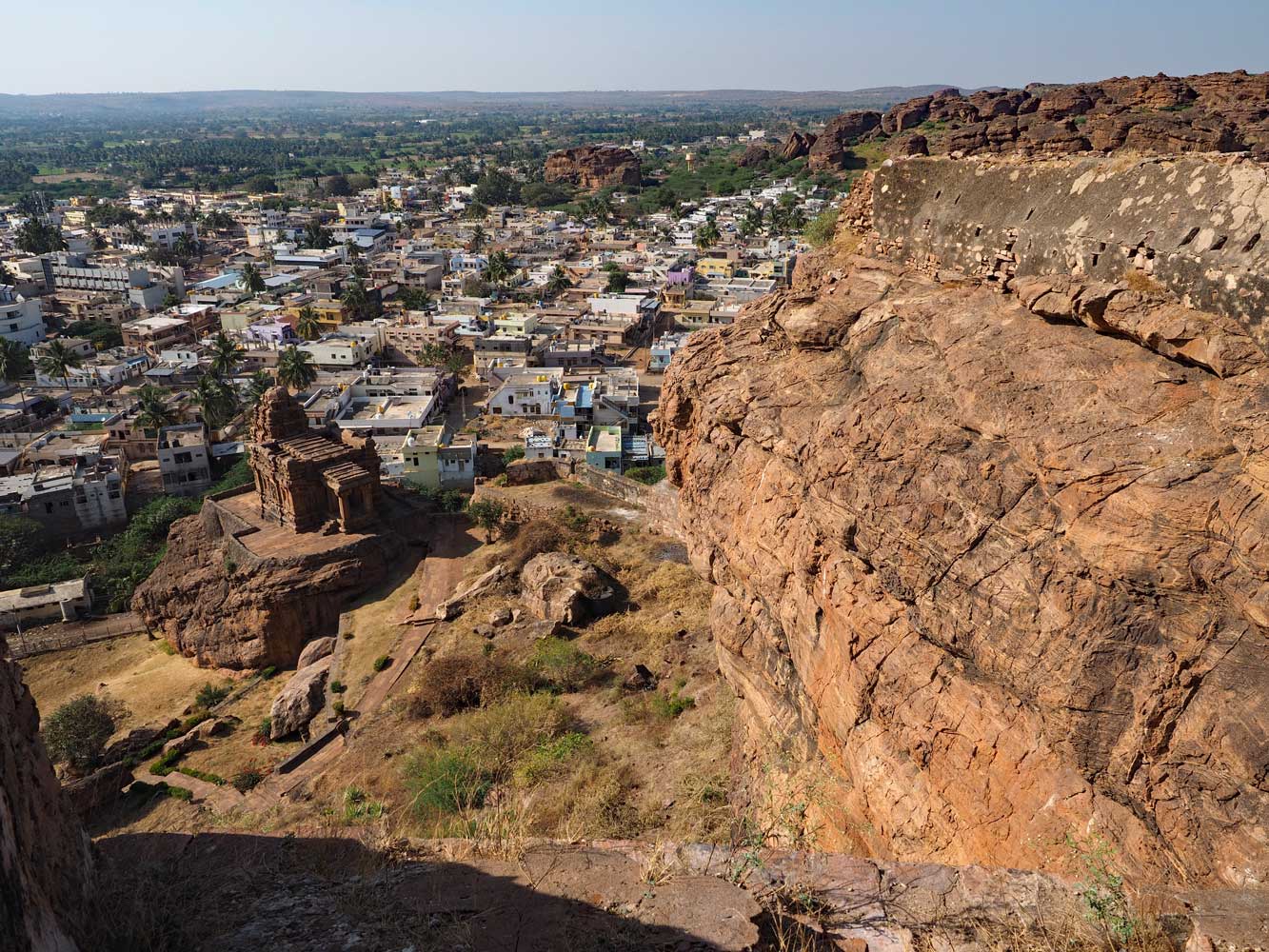
Lower Shivalaya Temple
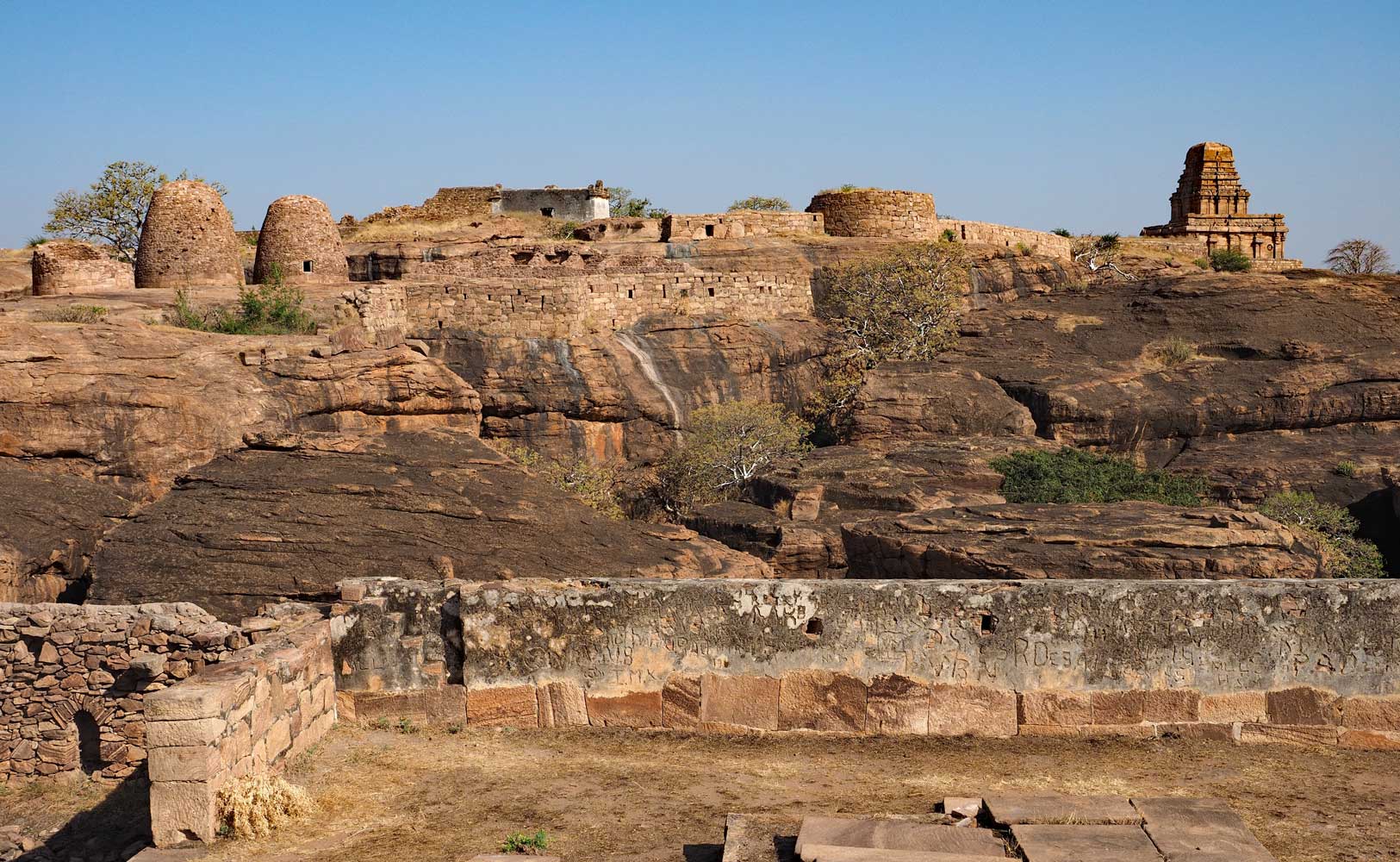
Three graneries, fortifications, and Upper Shivalaya Temple atop North Fort
From North Fort I wandered east across the plateau and came to Syed Basha Darga, a Muslim cemetery shaded by an enormous tree and a favored place for monkeys to take their leisure. A rough trail drops down to a little shrine of Hanuman and what might be meditation cells. Next I came to a trail junction with the left turn to fields and a Hindu temple complex at Mahakoota, but it’s about 4.6 kilometers away and too far to walk today. I turned right and soon reached the stone steps on the north shore of Agasthya Tirtha Lake. Women washed clothes and kitchen ware in the green waters, while boys tried their luck fishing. Around on the lake’s eastern shore I visited the attractive temples and shrines of the Bhutanatha Group, built in the 8th century and enlarged in the 11-12th centuries. During the rains a big waterfall pours off the cliffs beyond, but now the rocks are dry. In the evening I had a South Indian thali at the restaurant in my hotel.

Temples and shrines of the Bhutanatha Group
On to Pattadakal and Aihole
Back to beginning of “Backpacking 2020: India, Singapore, and Philippines”